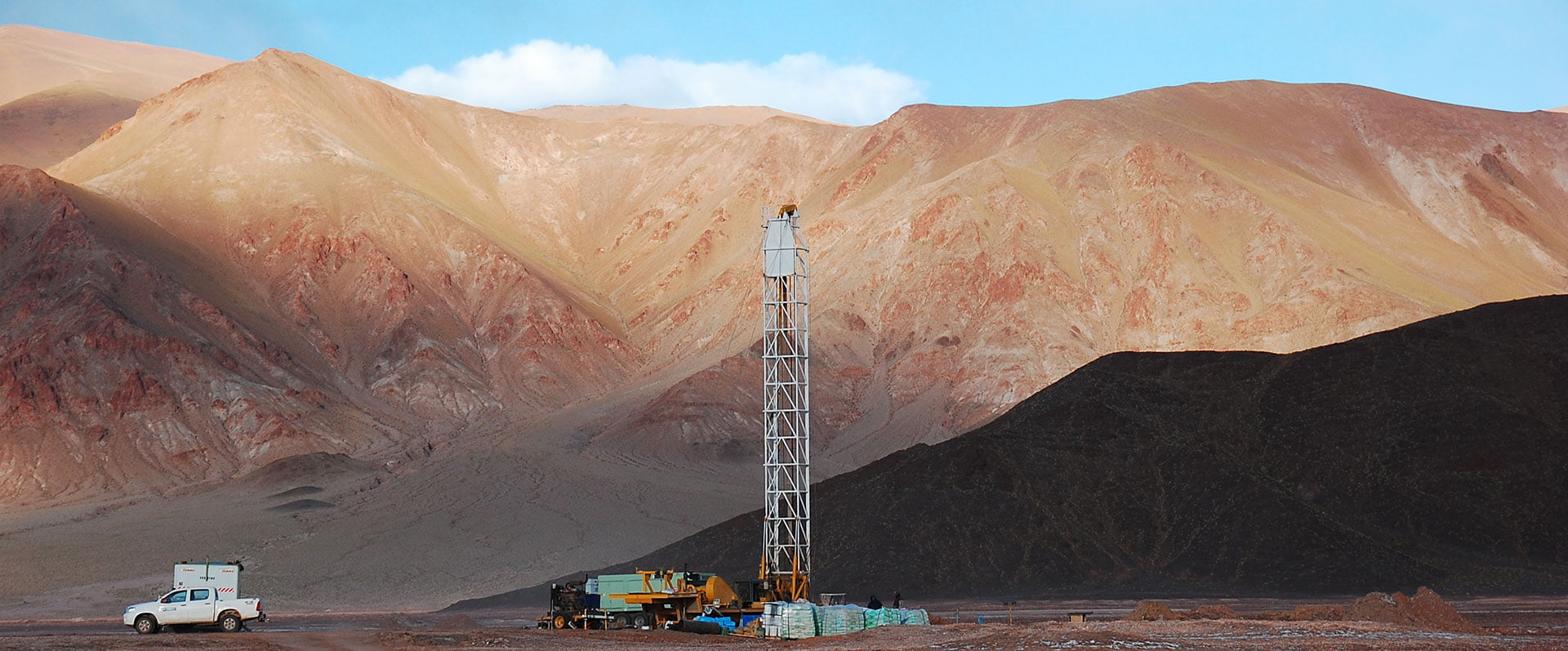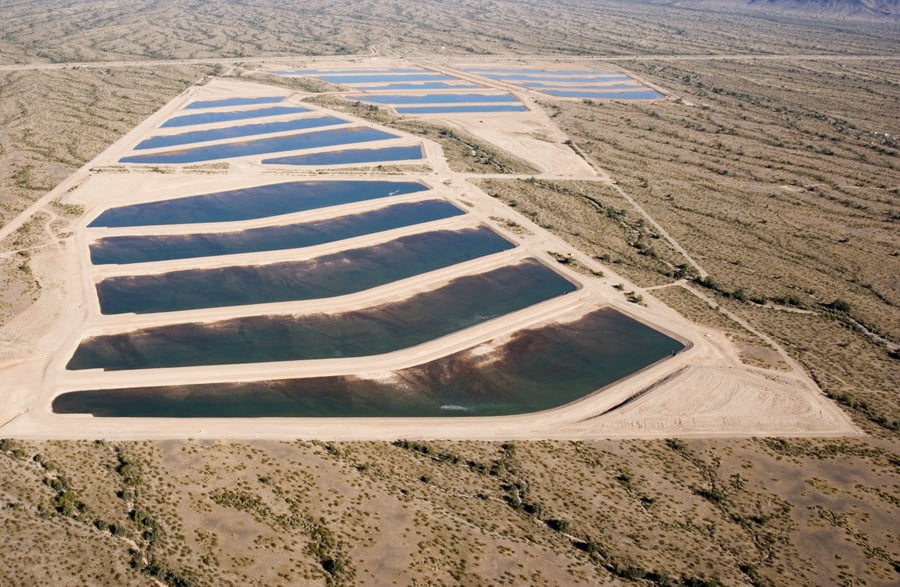In certain closed basins in the Andes and other parts of the world, groundwater can become so concentrated in total dissolved solids (TDS) that it exceeds the salinity of seawater and forms brine. Groundwater is generally considered saline if its TDS exceeds 1,000 mg/L but is classified as brackish when TDS concentrations are in the range of 1,000 to 10,000 mg/L. Seawater contains about 35,000 mg/L of TDS. Once concentrations exceed that level, we have brine.
Closed basins — which allow no outflow to external bodies of water — offer ideal conditions for brine formation. (In South America, such basins are known as “salars,” a Spanish verb meaning “to salt”). As water flows over and through geologic formations, various elements (sodium, calcium, and potassium, among others) are dissolved from the rock; hydrothermal springs can also release or mobilize such elements. Water flows toward the lowest part of a closed basin, where it evaporates. This process leaves the dissolved elements behind, increasing the TDS concentrations and density of the water. The denser, more saline groundwater sinks. Over thousands of years, the amount of dense, saline groundwater increases, and the salar will evolve from young to old.
Brines can be a valuable resource if they contain elements such as lithium, potassium, and boron in economic concentrations. In particular, the interest in lithium has intensified during the last few years as the demand for batteries has increased; the USGS estimates that 58 percent of the world’s lithium is found in closed-basin brines (Bradley and Jaksula, 2014)1. Potassium, a key ingredient in fertilizers and some of the world’s potash, comes from brine deposits. Boron, another important element, has many industrial uses.
Check back for Part 2, a discussion on how to evaluate and extract this resource.
1 — Bradley, Dwight and Jaskula, Brian, 2014, Lithium – For Harnessing Renewable Energy: U.S. Geological Survey Fact Sheet 2014-3035, 2 p., http://pubs.usgs.gov/fs/2014/3035/










